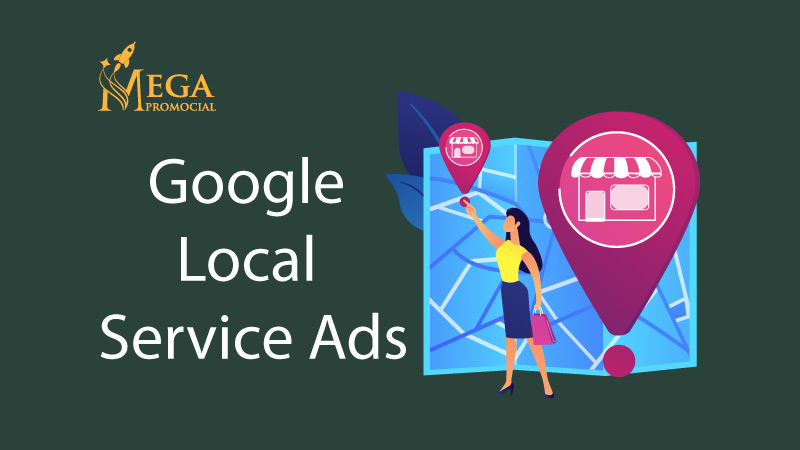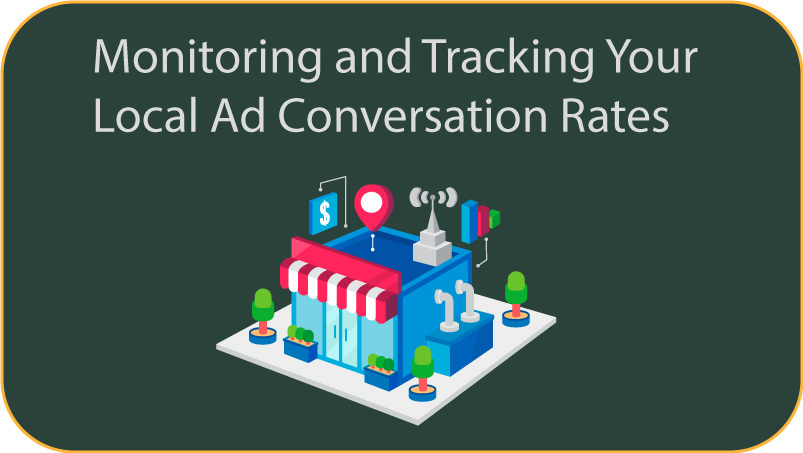Navigating the Future: Key Industry Trends Shaping Digital Marketing
In the fast-paced world of digital marketing, staying ahead of the curve is essential for businesses and marketer

Meta Description: Check out the winning strategies to boost your Google Local Service Ads (LSAs) today. Know how ads work, requirements and craft a compelling campaign today!

If you own a business and want to make more money, then Google Local Service Ads may help. These ads can strongly help get money and join with possible customers where you are. In this blog write-up, we will talk about everything you need to know about Google Local Service Ads and how you can use them to really help get money for your company. So, let’s jump in and find out the good things of this ad place for neighborhood companies.
Google Local Service Ads (LSA) appear at the top of search results when people look for things like plumbers, electricians, or locksmiths. They help local companies connect with customers who need their services. Google Local Services Ads lets companies promote their work to people in specific areas. It’s still new but can really help businesses get more money through Google ads.
Google Local Service Ads have lots of benefits for businesses wanting more money and popularity online. Here are a few advantages of Google Local Service Ads:
💡 Key Takeaway: Google ads for local services gave businesses more people seeing them, more trust, better leads that worked, smart advertising costs, ads made for phones, reviews from old customers, and protection for customers that built trust.
Google Local Service Ads are helpful for service businesses. They let companies advertise on Google search results to reach local customers looking for help. These ads stand out near related searches, so businesses get more attention and leads.
Google Local Service Ads helps connect local companies with people searching for services near them. Here’s a quick look at how it works:
First, businesses must prove they provide real services. This means showing licenses, background checks, and insurance. Once approved, companies can create ads.
Next, businesses choose the area and types of services they offer. Google then matches people searching for those services close by. This helps businesses get customers who really want their help.
Unlike some ads, Google LSA uses a pay-per-lead system. Companies only pay when potential customers contact them through the ad, like by calling or filling out a form. This means businesses only pay for real chances to help people.
Google uses location, reviews, how quickly a business responds, and other things to decide where to put ads. Ads for Local Service Ads appear at the top, before other paid and unpaid ads. This puts them in a spot where more people can see them.
It’s important for ads to be easy to see. Local Service Ads show up above everything else on the results page. This gives businesses a good chance for people to notice them and learn about their services.
Reviews help show people if a business can be trusted. Good reviews make ads more visible and draw in more potential customers. Asking happy customers to write reviews is a good way to build a business’s name on the Local Service Ads site. This can help the ads be seen by more people.
💡 Key Takeaway: Local Service Ads connect local businesses to people looking for help near them. When a business proves who they are, says where they work, and pays for each new customer, they can get their ads in front of more eyeballs to make more money. What customers say really matters for success with Local Service Ads.
There are a few things businesses need to do to use Google Local Service Ads and get the benefits. These rules make sure only good and honest businesses are shown. Here are the main rules:
When making your Google Local Service Ads campaign, follow some key guidelines to get good results. Here are a few things to consider:
Remember, Google wants ads to give useful true information. So make sure your ad fully and rightly shows your business and services.
💡 key Takeaway: Crafting your Google LSA campaign involves writing persuasive ad copy and setting up your ad strategically to maximize its effectiveness.
Writing great ads is important to stand out and get good leads. Here are some things to keep in mind when making your ad messages:
Effective ad writing for your Google Local Service Ads means catching attention with an intriguing title, demonstrating your skills and reliability, centering on advantages, using straightforward unambiguous language, adding a call-to-action, adjusting the writing to the service type, and persistently testing and changing for best outcomes.
Setting up your ad on Google Local requires attention. Here are some tips to follow:
💡 Key Takeaway: Google Local ads need target audience, good words, a clear “call”, helpful extras, and enough money. Doing these steps right gets the correct customers and makes business money.

It’s important to watch and see how many times people talk after seeing your Google Local Service Ads (LSA) to help the ads do well. By looking at how often this happens, you can see what’s working and what to fix to help the ads more.
Tracking how people respond to your ads helps make them better. Set up ways to see when ads lead to calls, website visits or other stuff you want. Make special web links for each ad so you know which one works best. Check how long it takes people to take action after seeing an ad. Try different ad versions to pick the most effective one. Using data helps choose ads that help your business.
There are some good ways to help your Local Service Ads campaign on Google work better.
💡 key Takeaway: Using optimization tactics like improving who sees it, tweaking what’s said, removing wrong words, watching how it’s doing, and trying different things can hugely boost how well a Google promoted post campaign goes and lead to better benefits for the company.
It’s important to watch the right numbers to see how well your Google Local Service Ads work. Measuring the right things helps you learn what’s good and not so good about your plan. Here are some numbers you should pay attention to:
Tracking how much money ads brought compared to what they cost showed if the campaign was good or needed work. A positive result meant profit, while negative showed room to improve. Using numbers helped make smart choices and get more money back.
Checking how many people saw your ads, who clicked through, and what they did after is important. Numbers for leads, sales and cost per result tell how well the campaign did and if changes could help. Data guides decisions to make the strategy better.
To best understand how your Google Local Service Ads (LSA) campaign is doing, you need to keep track of important numbers and try different methods. Here are some key things to think about:
Regularly checking the dashboard gave valuable ads data, including when shown and calls. Use this to make smart choices for the campaign.
💡 Key Takeaway: Learning from the campaign is important for making it better. By watching important numbers, testing changes, using tools to see results, and checking the dashboard, decisions used data to improve over time.
In closing, Google’s local service ads work well to help businesses and get more clients. They are perfect for companies close by because people can interact with them and give their thoughts. There are lots of tactics to do great with local service ads from Google. When using these suggestions, you can make more money and meet new people who need what you offer.
These ads match people looking for help with companies providing services near them. When someone searches for something like “plumber in my city”, Google shows ads for plumbing businesses close by. The ads show the company name, phone number, hours, ratings, and reviews. Customers can contact the business right from the ad, making it easy for both sides.
Businesses must meet some rules. They must provide services like locks, plumbing, or heating and air. They need the right licenses and insurance too. Google also checks backgrounds and reviews to make sure companies can be trusted.
It’s important to track key numbers to see how the ads do their job. Things like click-through rates, how many leads turn into customers, cost per lead, and return on investment all help understand the campaign.
When making your Google LSA campaign, pay close attention. Writing ads that catch eyes is key. Focus on what makes you special, mention deals or promises, and use a clear “call to action” to have folks contact you. Also, set your ad with related keywords, correct location targeting, and a budget that lets you reach many.
To make your Google LSA campaign better, watch and track how many sales ads make. A high number means ads really sell things. Think about adjusting money, strategies, or who sees ads if any places need help. Also, try different ad versions to see which folks like most. Always look closely and fix your campaign to use your money in the best way.
Our blog is a hub for valuable resources, informative guides, and insightful commentary on a
variety of industry topics, designed to help you stay up-to-date and informed.
In the fast-paced world of digital marketing, staying ahead of the curve is essential for businesses and marketer
In the fast-paced and ever-evolving world of digital marketing, staying informed and continuously learning is cru
In the ever-evolving world of digital marketing, staying ahead of the curve and building a strong online presence